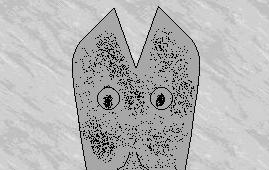I’ve seen the first five minutes of the film Indiana Jones and the Temple of Doom 17 times. Some day, I hope to see the rest of it. How I came to be in this position is a strange tale that I only partially understand; I’m putting it down on paper in the hope that others might be able to learn something from it.
My story started in the Universal, a large theatre in Toronto. It was a Sunday afternoon, and, although there were over 100 people, the theatre seemed empty. The Universal was an ornately decorated place – a palace, really – with really comfortable seats. It was a great place to see a movie.
I find that there is something about seeing a movie in a theatre that is missing when the same movie is viewed on television, and I’m not just talking about the inches trimmed off either side of the film to make it fit the square shape of the box. Movies are a communcal experience, to be shared by more people than you can fit into the average den. I always get a rush of anticipation when the curtain goes up.
The curtain had barely lifted when a shadowy figure in the back of the theatre shouted, “Turn off the projector!” The film sputtered and, just as Harrison Ford made his first appearance, the screen went dark.
“I’m sorry, ladies and gentlemen,” the man, who was referred to by an usher as “Drab” (I believe it), told us, “but, this theatre is closing. The owner intends to put condominiums on this site. We have buses waiting outside to take you to a new theatre where this feature is playing. Thank you for your patronage.”
We were taken, grumbling, to the Yonge-Odeon Duplex. It was half the size of the Universal, with fewer fixtures and less atmosphere. But, the seats were still fairly comfortable, and there was real butter on the popcorn, not the chemical sludge that most theatres serve, so we decided to give it a chance.
I was still excited by the prospect of seeing the movie, so I was really disappointed when, mid-way through the opening credits, the projector was shut off and Drab gave his little speech again. (This time, the theatre was to be torn down and the site used for a shopping mall.) We hurried back to the buses (was it Hitchcock who observed that all audiences are cattle?) and taken to the Hollywood-Bloor Quadriplex.
The audience had lost a few members through attrition; nonetheless, the theatre we were ushered into, half again the size of the one we had left, was barely enough to hold us all. It was a plain theatre, with mildly uncomfortable seats.
The curtain went up.
The curtain came down.
They hadn’t even managed to get the projector going before they led us out of the theatre. When we got to the Pearson Multiplex (a breakthrough in modern cinematic entertainment – nine theatres under one roof!), we were confronted by a serious problem: it would only seat about two thirds of us.
A quick draw was arranged. We all wrote our names on the backs of our ticket stubs and Drab drew them, slightly soggy, from a used popcorn box. Those whose names weren’t chosen were given free passes to a future screening, a dubious consolation at best. There followed a tear-filled parting, and those of us who remained promised to write, telling those who left what the movie was like.
You could say that I was one of the lucky ones.
The new theatre had 60 uncomfortable seats, set in flat concrete. It was a shoebox, really, but those of us who were allowed in were highly motivated to see the film. We still had a naïve hope that we might.
The rest of the night has become a blur in my mind. The next stop on our theatrical mystery tour must have been the Eaton Centre Omniplex (18 – count ’em – 18 theatres, no waiting!), which held about as many people as the average den. The theatres were dividing and multiplying faster tham amoebae in a favourable culture. The bus that had transported us from one venue to another became a taxi. I had long given up hope of seeing the film when, at the Odeon Googleplex, the inevitable finally happened:
“I guess it’s just you and me, kid.”
“I guess so.”
“You must really want to see this picture bad.”
“I…I thought I did. It’s hard to be sure any more.”
“Okay. Here.”
Drab handed me a videocassette, gave me cab fare and sent me home.
As I write this, the tape sits on my television, waiting to be viewed. I want to watch it, really, I do. I just can’t help but wonder: if I do start playing the movie, what’s going to happen to my home?


